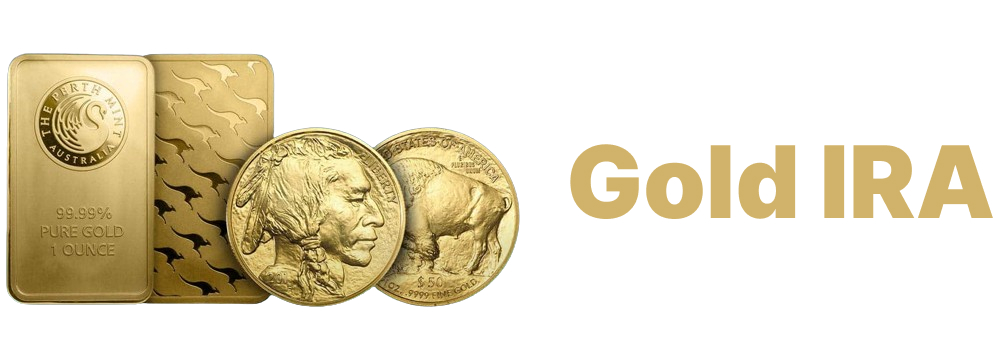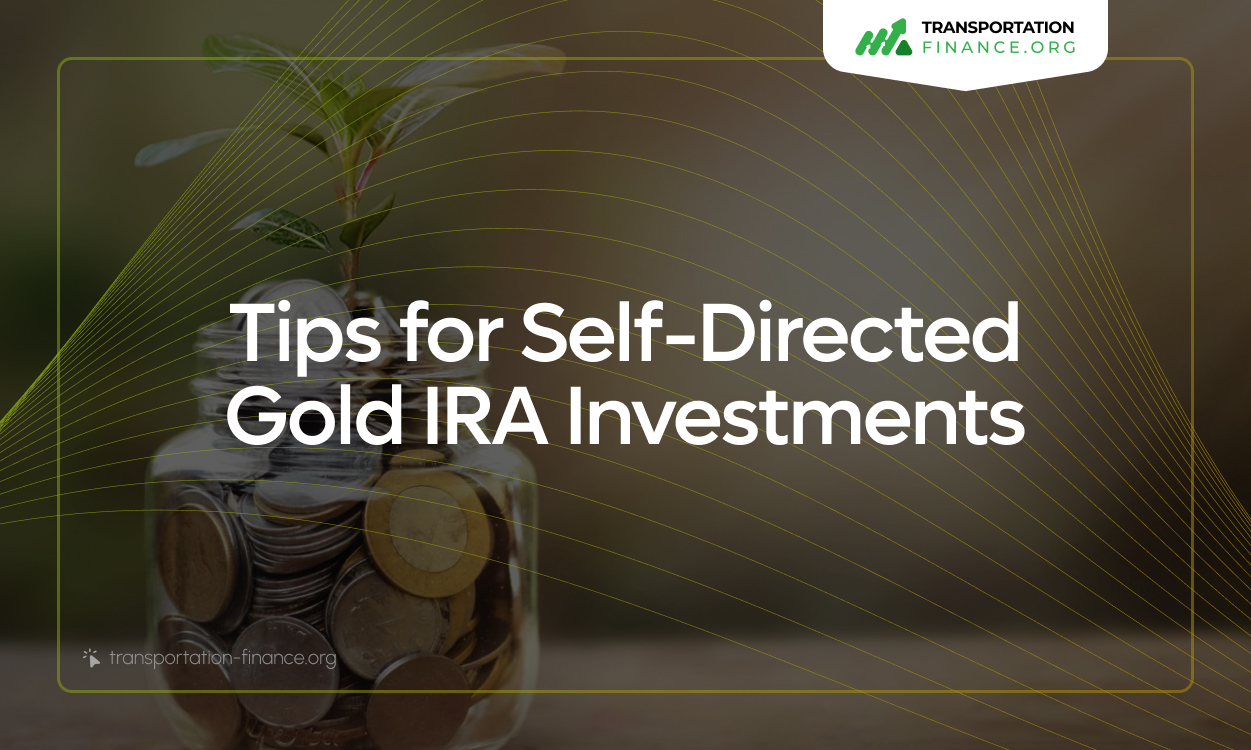Disclaimer: The companies mentioned in this report may offer compensation to us, without any charge to our readers. This is how we keep our reporting free for readers. Our selection of companies is determined by compensation and rigorous analysis.
Are you considering investing in a Gold IRA but unsure where to start? Look no further, as we are here to guide you every step of the way.
In this comprehensive guide, we will walk you through the process of setting up a Self-Directed Gold IRA. From choosing the right custodian to understanding the rules and regulations, we have all the information you need.
Explore the benefits and potential drawbacks of investing in gold, along with practical tips for monitoring and managing your investments. Prepare to take control of your financial future with a Self-Directed Gold IRA.
Our team has spent years researching every company in the precious metals industry. Save your time and use our research ⟶
Hand picked top 5 trusted and best reviewed companies
Protect Your Retirement
Claim Your FREE Gold Kit Now
Why Invest in Gold IRA?
If you’re looking to diversify your retirement portfolio, consider investing in a Gold IRA. With the ups and downs of the stock market and the allure of precious metals, a Gold IRA could be a smart move for your retirement planning.

In today’s world of unpredictable market swings, having some of your retirement funds in gold can bring you peace of mind. Gold tends to hold its value or even increase during tough economic times, serving as a buffer against inflation and economic instability.
Plus, having gold in your retirement accounts can offer tax benefits, potentially allowing you to enjoy tax-deferred growth on your investments. This mix of diversification, stability, and tax perks makes a Gold IRA an attractive choice for those aiming for a well-rounded and resilient retirement strategy.
How to Set Up a Self-Directed Gold IRA?
When you set up a Self-Directed Gold IRA, you need to follow a few key steps to make sure your retirement savings are securely invested in precious metals. First, choose a reliable custodian who will help you select the right gold investments and kickstart your robust retirement account.
Once you’ve found a trustworthy custodian to manage your Self-Directed Gold IRA, the next step is funding your account. This usually means transferring funds from an existing retirement account or making direct contributions. Your custodian will walk you through all the paperwork needed to make this process a breeze.
Once your account is funded, it’s time for the fun part – choosing the right gold investments. Whether you go for physical gold bars, coins, gold mining stocks, or ETFs, there are plenty of options to diversify your portfolio and protect your retirement savings from market ups and downs.
1. Choose a Custodian
Regarding your Gold IRA, choosing a trustworthy custodian is key. You want to make sure they follow IRS regulations and keep your precious metal assets safe and sound.
The custodian’s experience is a big deal in managing your Gold IRA effectively. An experienced custodian will know the ins and outs of IRS rules, reducing the risk of any compliance issues. Make sure the custodian has secure storage facilities to protect your precious metals. Look for segregated storage options to keep your assets safe from any potential mishaps.
By picking a reliable custodian that sticks to IRS regulations, you can relax knowing your Gold IRA is in good hands. Your investments will be safe and sound, giving you peace of mind.
2. Fund Your Account
Funding your Self-Directed Gold IRA means you need to follow the contribution limits set by the IRS and make sure you deposit your funds on time to make the most of your retirement savings potential.
These contribution limits are there to help your retirement account grow steadily, so you can enjoy the tax benefits that come with Gold IRAs.
When you’re making deposits, you have different choices, like transferring funds from your existing retirement accounts or making direct contributions. It’s crucial to keep making consistent contributions. This helps your Gold IRA grow through compound interest, setting you up for a more stable financial future in retirement.
3. Select Your Gold Investments
When choosing the right gold investments for your Self-Directed Gold IRA, you need to consider factors like the type of gold coins or bullion, storage requirements, and liquidity for potential distributions.
Gold coins are a popular choice for investors like you who want to diversify their portfolios within a Gold IRA. They’re usually easier to store and transport compared to larger bullion bars, so they’re a convenient option if you’re worried about storage.
On the flip side, gold bullion, which includes bars and ingots, is often seen as a more straightforward way to invest in physical gold. Its value depends on the weight and purity of the metal, providing a direct investment approach for you if you’re aiming to hedge against economic uncertainties.
Protect Your Retirement
Claim Your FREE Gold Kit Now
What are the Rules and Regulations for Self-Directed Gold IRA?
To navigate the ins and outs of a Self-Directed Gold IRA without any hiccups, you need to grasp the rules and regulations. This will keep you in the clear, steering clear of penalties and making sure you’re playing by the IRS’s book. Whether it’s knowing the distribution rules or keeping up with those Required Minimum Distributions (RMDs), staying on top of the info is your ticket to a smooth-sailing Gold IRA.

Regarding taking distributions from your Self-Directed Gold IRA, the IRS isn’t messing around. They have specific requirements in place, and you’ve got to have your paperwork in order and meet those deadlines. Missing the mark on RMDs can land you in hot water, with hefty penalties waiting on the undistributed amount.
Falling out of line with IRS rules for your Self-Directed Gold IRA can have serious repercussions, putting the tax advantages of your account at risk and possibly triggering extra taxes and penalties. It’s a smart move to chat with a financial advisor or tax pro to make sure you’re fully in the know and on track with these regulations.
1. Prohibited Transactions
Avoiding prohibited transactions in your Self-Directed Gold IRA is crucial to sidestep serious tax implications and prevent the account from being disqualified. To maintain the tax benefits of your Gold IRA, you need to have a good understanding of these transactions and steer clear of them.
If you find yourself involved in prohibited transactions within your Gold IRA, you could end up facing penalties from the IRS. These transactions might involve using your account to buy assets like collectibles or specific types of coins that aren’t allowed.
On top of the tax repercussions, your account could lose its qualified plan status, meaning you’d have to pay taxes on the entire balance right away. It’s important to follow the rules and regulations that govern Gold IRAs to safeguard your retirement savings and minimize any potential financial setbacks.
2. Required Minimum Distributions
Regarding your Self-Directed Gold IRA, you’ve got to keep an eye on those Required Minimum Distributions (RMDs) once you hit a certain age. To stay on the good side of the IRS and steer clear of penalties, it’s crucial that you understand the RMD rules and have a plan in place for those distributions.
Typically, RMDs kick in at age 72 for traditional IRAs, but with Roth IRAs, there’s no need for the original account holder to take RMDs. The amount you need to withdraw is calculated based on life expectancy tables from the IRS, and missing that mark can mean facing some serious penalties.
To handle RMDs like a pro, some folks choose to take partial distributions throughout the year to lessen the impact on their taxes. And don’t forget, using charitable donations to fulfill your RMDs can not only help you meet your distribution obligations but also offer some tax benefits along the way.
3. Contribution Limits
Make sure you keep an eye on the contribution limits for your Self-Directed Gold IRA. The IRS sets these limits annually, taking into account things like your age and income. Sticking to these limits is key if you want to make the most of the tax advantages that come with a Gold IRA.
The limits are there to make sure you don’t go over the allowed contributions, which could land you in hot water with penalties. The IRS rules determine the maximum amount you can put into your Gold IRA each year, with different thresholds for folks under 50 and those who are 50 and older.
Your income level and participation in other retirement plans can also affect these limits. It’s important to stay within these boundaries not just to follow the rules but also to fully enjoy the tax benefits that a Gold IRA can bring.
What are the Benefits of Self-Directed Gold IRA?
With a Self-Directed Gold IRA, you can enjoy a whole bunch of perks. Not only does it help diversify your retirement portfolio and offer tax advantages, but it also opens up the chance for stable, long-term investments in precious metals. When you throw gold into the mix, you can really step up your retirement planning game.
Having gold in your retirement account can work as a safety net against economic ups and downs, and it’s a great way to combat inflation since gold tends to keep its value over the years. Owning physical gold also adds a touch of security and tangibility to your investment portfolio.
Plus, with a Self-Directed Gold IRA, you get to call the shots on your own investment choices. This means you can personalize your retirement savings based on what works best for you and your risk tolerance. Having this kind of control can lead to a more tailored and potentially lucrative retirement plan.
1. Diversification
Incorporate diversification within your Self-Directed Gold IRA to lower risk and achieve a well-rounded retirement portfolio. By mixing precious metals with traditional assets, you can craft a strong and varied investment plan.
This diverse approach helps you spread out risk among different asset types, making you less susceptible to market ups and downs. Gold, in particular, acts as a valuable shield against inflation and economic unpredictability, offering stability when things get shaky. Adding precious metals like gold to your retirement savings can serve as a safety net, safeguarding your wealth in the long run.
A blend of assets that includes both regular investments and alternatives like gold can boost your overall portfolio performance and strengthen risk management tactics, setting you up for financial stability during retirement.
2. Hedge Against Inflation
Incorporate gold into your Self-Directed Gold IRA to shield yourself against inflation and safeguard the value of your retirement savings, especially when the economy is shaky. Gold serves as a reliable asset that can help you maintain your purchasing power in the long run.
The reason gold is considered a reliable hedge against inflation lies in its intrinsic worth and limited availability, which make it a solid store of wealth even when the economy is in turmoil. Looking at historical data, gold has proven to hold its value over centuries, even surpassing the performance of typical assets during times of market instability.
When the economy takes a hit, investors turn to gold for its stability and safe-haven qualities to protect their investment portfolios from potential devaluation. By holding tangible assets like gold in a Gold IRA, you not only benefit from diversification but also boost the resilience of your retirement savings against the impact of inflation.
3. Potential for Higher Returns
When you’re thinking about investing in gold, a Self-Directed Gold IRA could be your ticket to higher returns compared to the usual assets. By chatting with a financial advisor and smartly spreading out your gold investments, you can shoot for some nice profits in your retirement accounts.
Financial advisors are like the GPS for your investment journey, especially when it comes to gold investments in a Self-Directed Gold IRA. Their know-how can help you steer through market ups and downs and make smart choices to boost your investment game.
To spice up your Gold IRA mix, think about blending in some physical gold, gold stocks, and gold ETFs. This mix can jazz up your potential returns while keeping the risks in check. Getting the scoop on market trends and economic clues can also help you tweak your strategy to grab growth opportunities.
Protect Your Retirement
Claim Your FREE Gold Kit Now
What are the Risks of Self-Directed Gold IRA?
When you’re looking into a Self-Directed Gold IRA, you’re diving into a world of perks and pitfalls. Sure, you’ve got the potential for some sweet benefits, but you’ve also got to watch out for things like wild price swings, storage costs, and the ever-looming threat of fraud. These risks are all part of the game when you’re planning for retirement with precious metals.
Picture this: the gold market goes on a rollercoaster ride, and suddenly your investment’s value is bouncing all over the place, leaving you feeling a bit queasy about your finances. And don’t forget about the extra expenses that come with keeping physical gold safe and sound—those safe deposit boxes and custodial fees can really add up.
You’ve got to do your homework on trustworthy custodians and storage spots to shield yourself from theft or damage. And when it comes to fraud, you’ve got to be Sherlock Holmes, investigating dealers, and double-checking the authenticity of your gold to keep your retirement savings safe and sound.
1. Volatility
Price volatility is a key risk factor in your Self-Directed Gold IRA because of the ever-changing nature of precious metals markets. To navigate through these market uncertainties and protect the value of your retirement savings, it’s important to understand and manage this volatility properly.
When gold prices start swinging like Tarzan through the jungle, it can lead to sudden ups and downs in your Gold IRA performance. This rollercoaster ride can be quite the thrill, impacting how your overall portfolio performs.
To tackle this wild ride head-on, diversification is your best friend. Mixing gold with other assets can help even out the bumpy impact of volatility on your investment. Keeping your eyes on the long game and not making impulsive decisions based on short-term market swings can lead to more stable growth in the long run. Stay on top of market trends and stick to disciplined investment strategies to ride out the storm of price volatility in your Gold IRA like a pro.
2. Storage and Insurance Costs
When you store and insure your physical gold assets in a Self-Directed Gold IRA, be prepared for some extra costs that could chip away at your overall investment returns. To make sure you’re getting the most out of your gold investments, it’s important to understand how storage and insurance expenses can impact your profits.
The costs of storing and insuring your gold can vary depending on how much gold you have stored and the type of insurance you choose. If you’re trying to keep costs down, you might want to think about strategies like consolidating your holdings to lower storage fees or opting for insurance plans that offer competitive rates.
Finding a secure storage facility is key to keeping your physical gold safe from any sticky fingers or accidents. And having insurance coverage that’s specifically tailored to the risks of gold storage can give you peace of mind, knowing you’re financially protected in case anything unexpected happens.
3. Potential for Fraud
In the precious metals market, you need to watch out for potential fraud, especially if you’re a Self-Directed Gold IRA investor. To protect yourself, you should stay alert, do your homework, and team up with reputable financial institutions to reduce the risk of falling victim to scams.
You’ve got to be careful when you hear promises of big returns with little risk – those are often the bait for scams. Keep an eye out for Ponzi schemes, where returns are paid out with new investors’ money instead of actual profits. Another common trick is convincing you to transfer funds to offshore accounts, making it hard to recover any losses.
Make sure to thoroughly check out any investment opportunities and be cautious of unsolicited offers or high-pressure sales tactics. Keeping a close eye on your account statements and seeking advice from trusted financial experts can help you catch any suspicious activities before they cause major headaches.
How to Manage and Monitor Your Self-Directed Gold IRA?
To effectively manage and monitor your Self-Directed Gold IRA, you need to regularly review your investments, keep up with market trends, and consider seeking professional advice to optimize your retirement savings strategy.
Regarding monitoring your Gold IRA, being proactive is key. You should perform routine reviews of your investments to evaluate performance and make any necessary adjustments. Market analysis is crucial for understanding economic indicators that can affect the value of your IRA holdings.
Don’t forget the importance of financial advisors. They can offer expert guidance on how to diversify your portfolio, minimize risks, and maximize returns based on your retirement goals. Engaging in strategic discussions with advisors will help you create a solid retirement plan that aligns with your financial objectives and risk tolerance.
1. Regularly Review Your Investments
You need to keep a close eye on the performance of your gold investments in a Self-Directed Gold IRA. It’s crucial for assessing profitability, spotting opportunities, and making adjustments to your portfolio that match up with your retirement objectives.
Taking the time to do these investment check-ins helps you stay in the loop about market trends, track how your assets are doing, and make smart choices based on your financial goals. During these review sessions, financial advisors are key players in evaluating your Gold IRA’s performance.

They can give you valuable insights, analyze market conditions, and suggest customized strategies to boost your investment gains. Teaming up with a savvy advisor can help you fully grasp your portfolio’s strengths and weaknesses, leading to better decision-making and potential growth opportunities.
2. Keep Up with Market Trends
Staying informed about market trends and developments in the precious metals sector is crucial for making informed investment decisions within your Self-Directed Gold IRA. This awareness allows you to adapt your investment strategies in response to changing market conditions.
By staying abreast of gold prices and economic indicators, you can adjust your portfolio allocations to maximize returns and minimize risks. Understanding market trends also aids in effective risk management by identifying potential shifts in market sentiment or geopolitical events that could impact the value of your gold holdings.
Long-term planning within a Gold IRA benefits from a proactive approach to market trends, helping you capitalize on opportunities and navigate challenges with foresight.
3. Consider Professional Advice
When optimizing your Self-Directed Gold IRA, you should consider seeking professional advice from financial advisors. They can offer valuable insights, help manage risks, and maximize returns based on your retirement goals and investment preferences.
Financial advisors are essential when it comes to navigating the complexities of investing in a Gold IRA. They can work with you to create a customized financial plan that matches your long-term objectives and risk tolerance. By conducting thorough risk assessments, advisors can suggest suitable investment options to diversify your portfolio and protect against market fluctuations.
This proactive approach ensures you can make well-informed decisions to safeguard your retirement savings and position yourself for potential growth in the precious metals market.
Protect Your Retirement
Claim Your FREE Gold Kit Now

I’m Bob Smithfield, your guide to making smart, safe investments. Here, I share financial insights and strategies that help you navigate the complex world of finance with confidence.
My goal is to provide you with the information and tools you need to make informed decisions about your finances.
